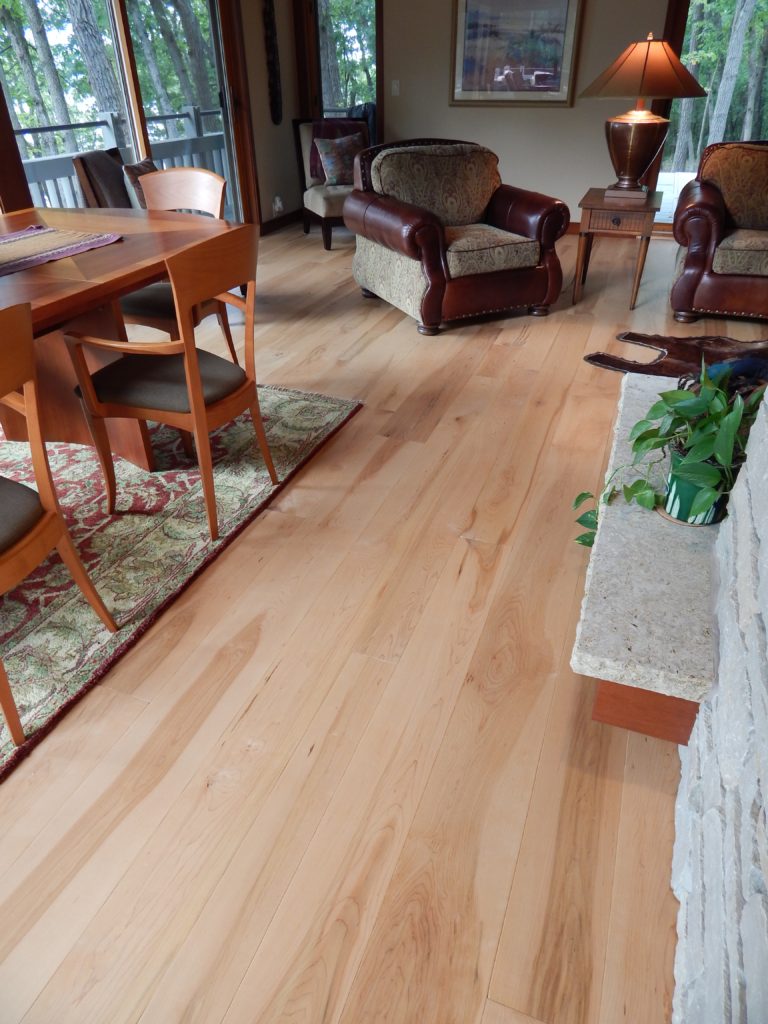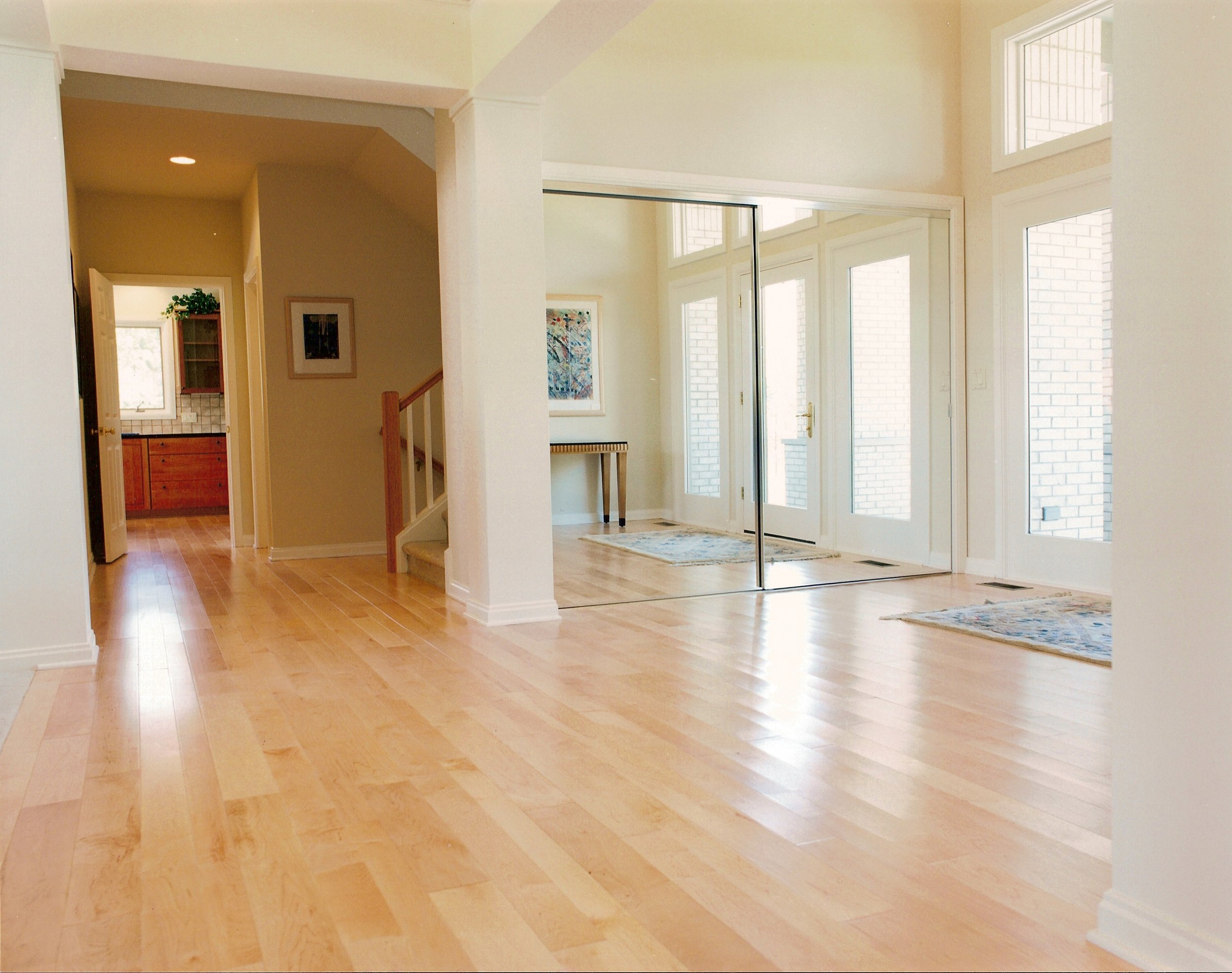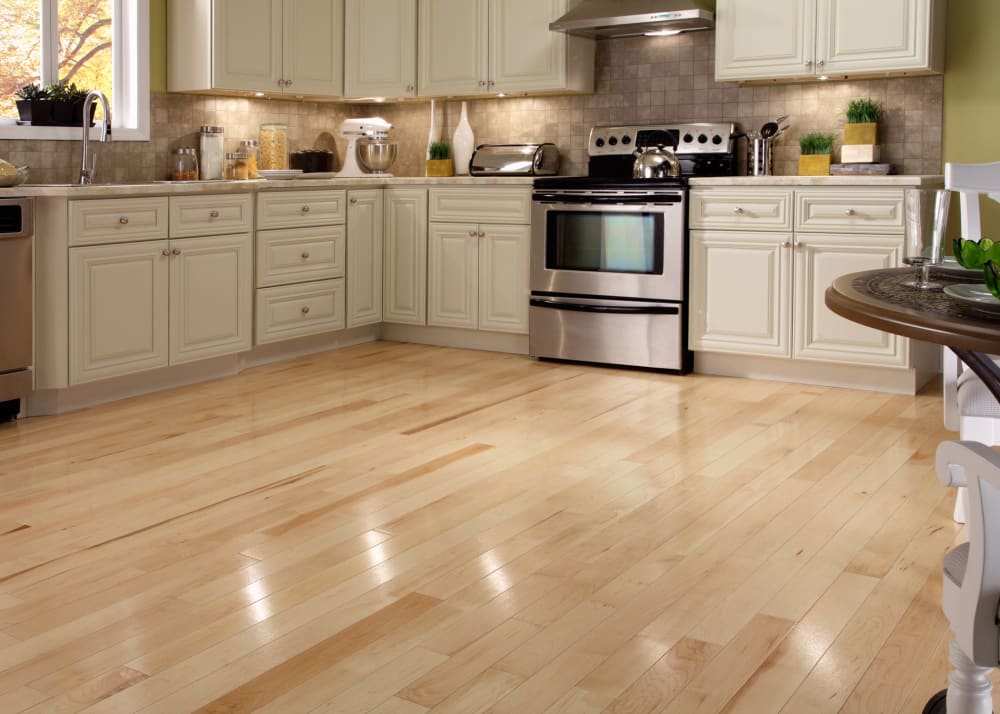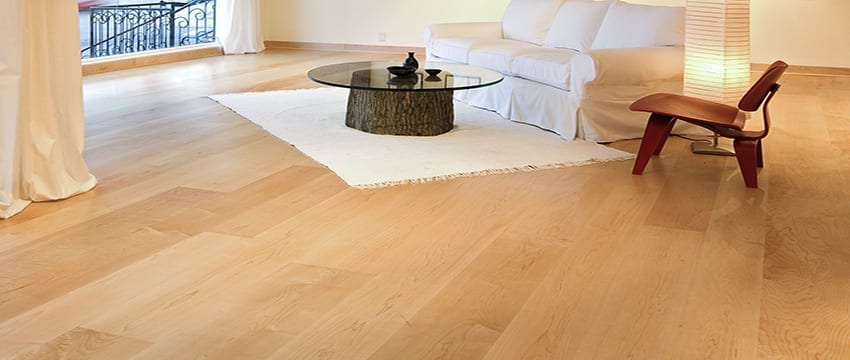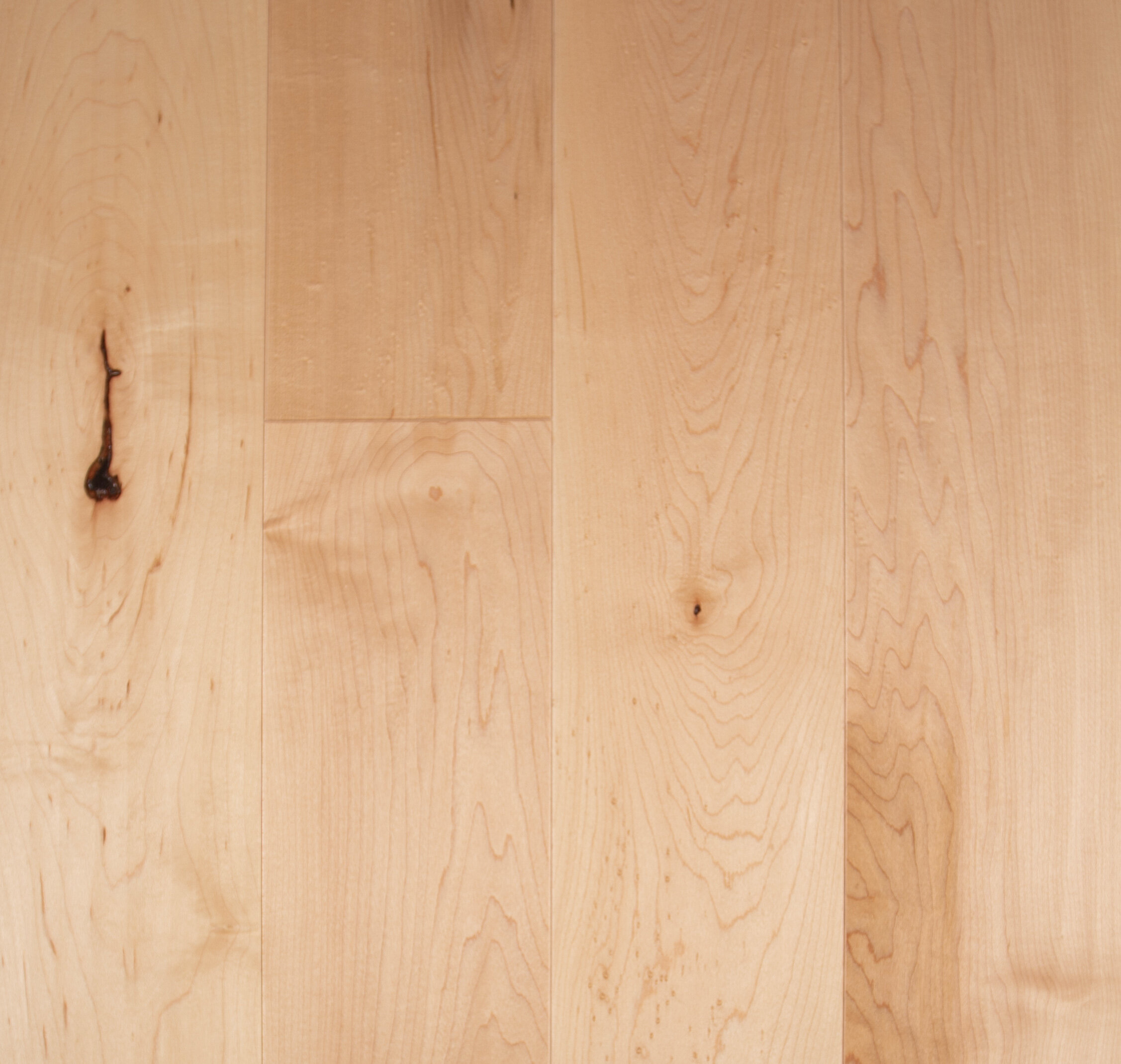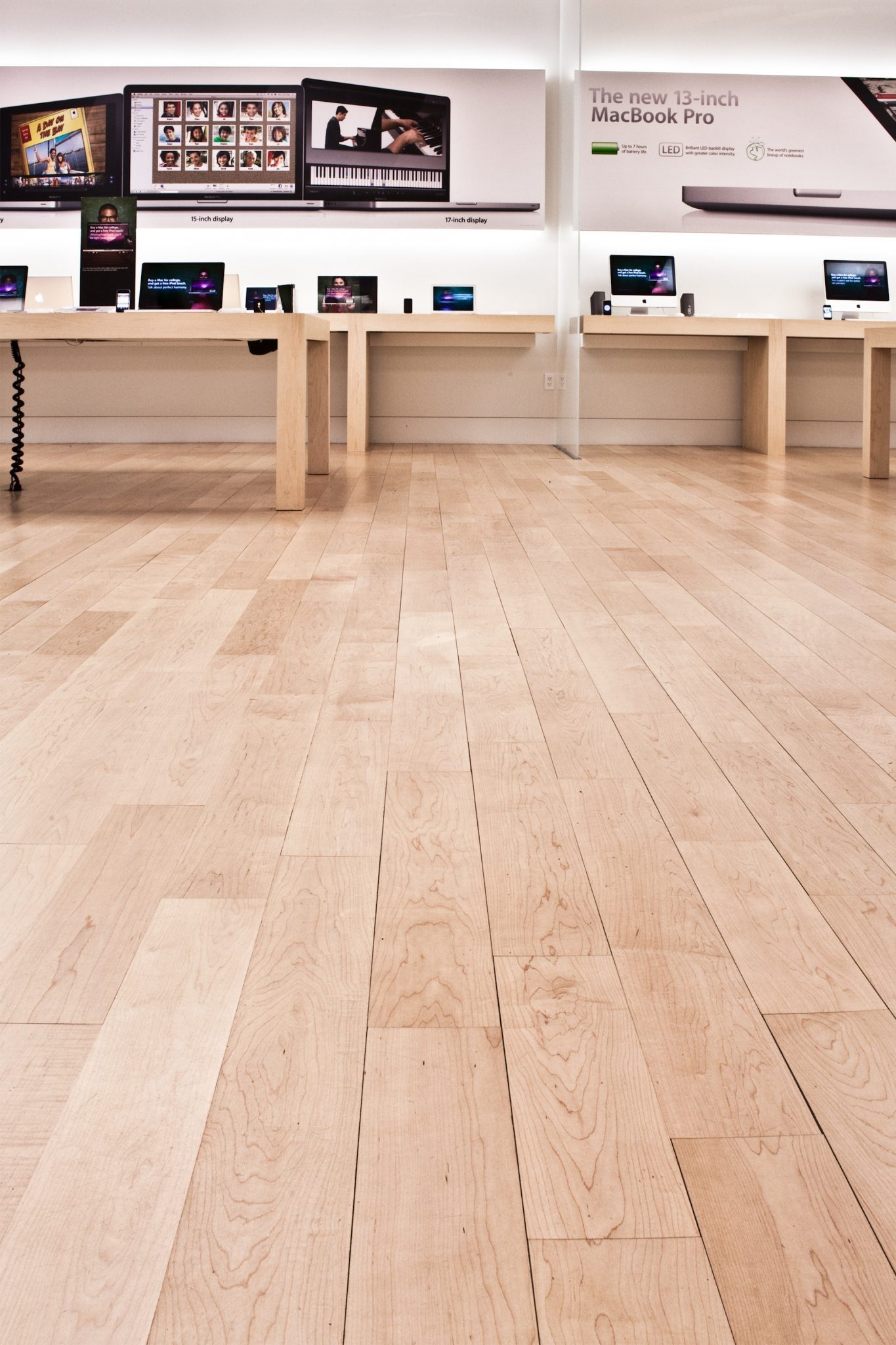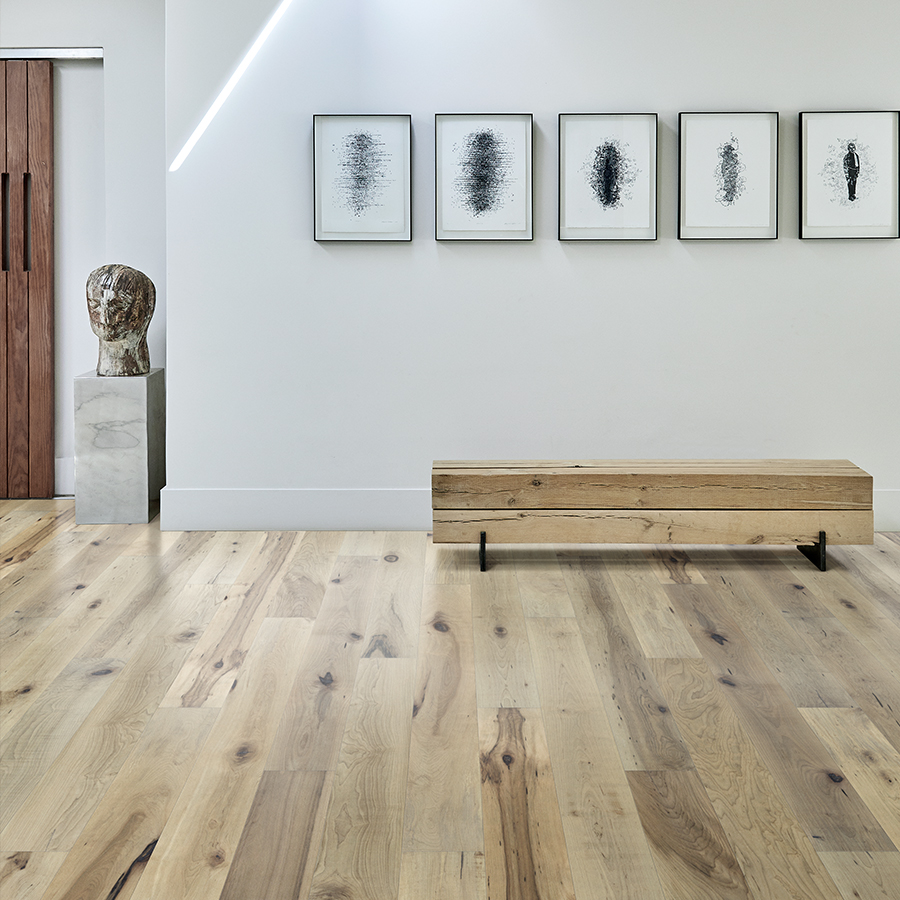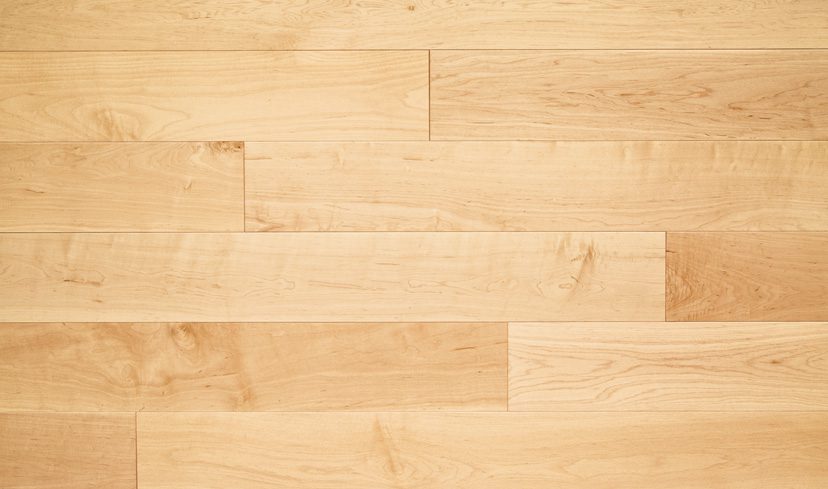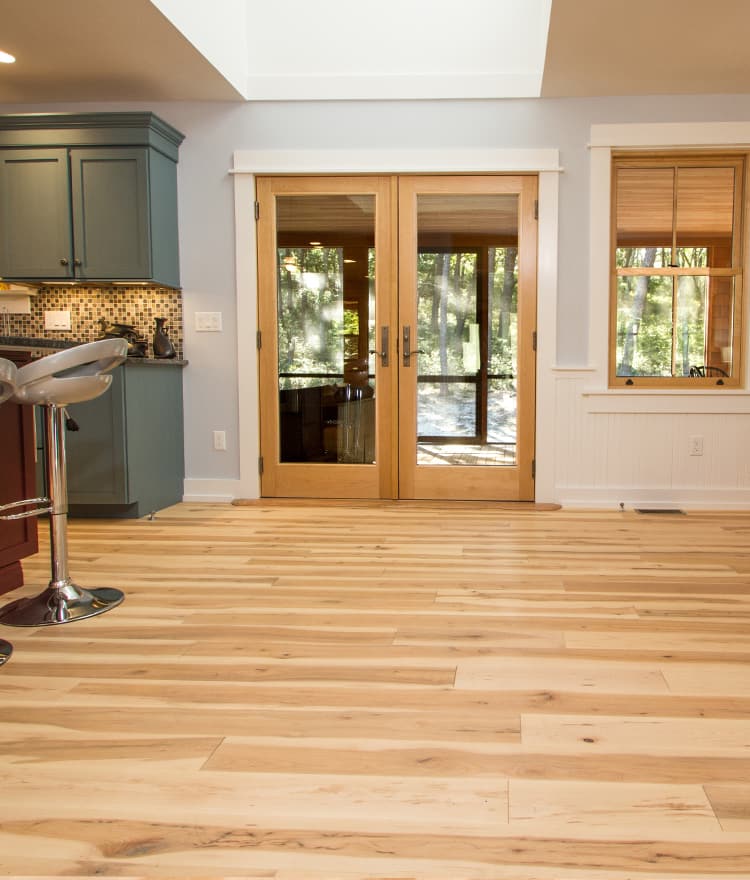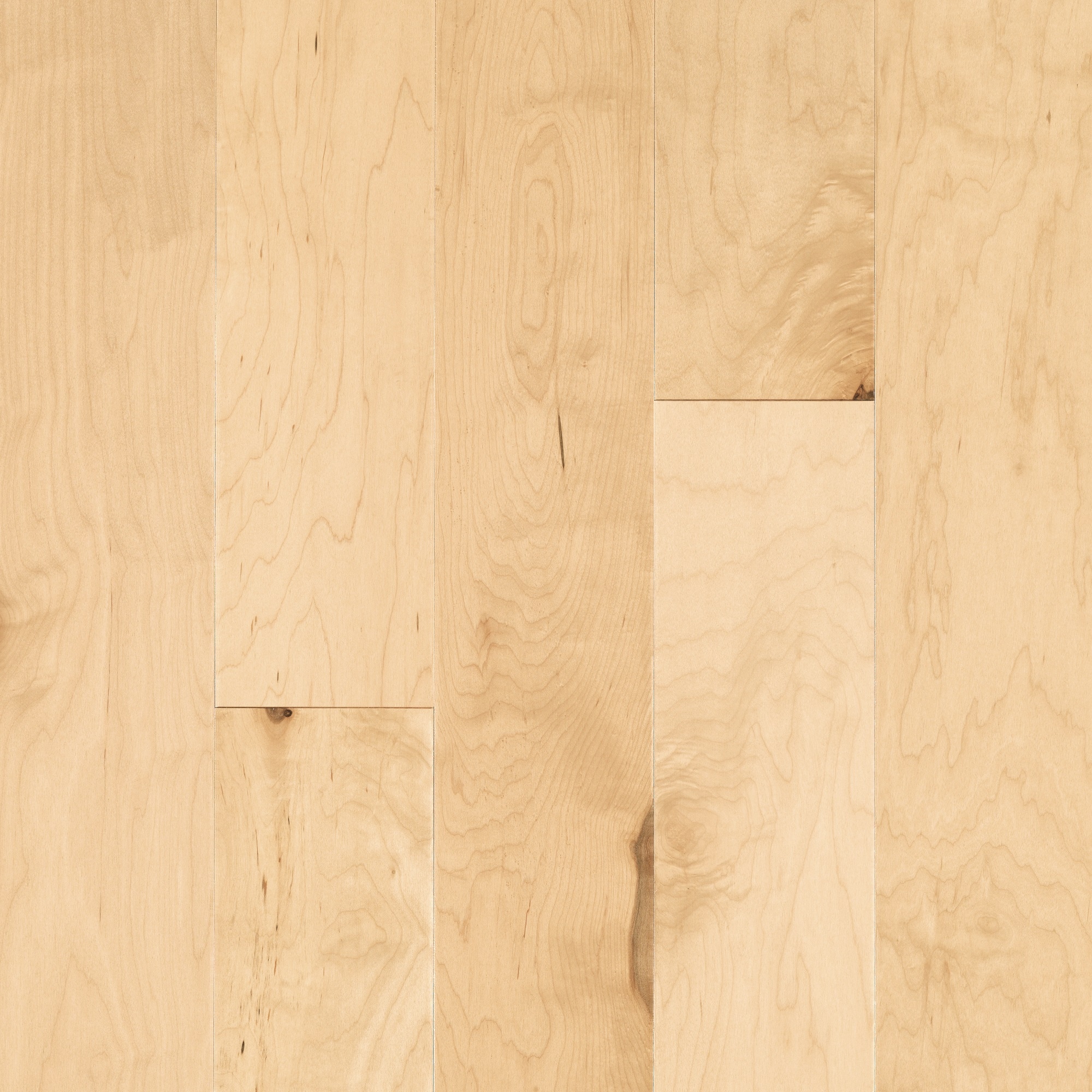Maple Hardwood Flooring: Why It’s a Popular Choice for Homeowners
Maple hardwood flooring has become a staple choice for homeowners and designers alike. Known for its subtle beauty, strength, and versatility, maple wood enhances any interior space with its warm tones and natural grain. As one of the hardest domestic hardwoods, it offers durability that few materials can match, making it an excellent investment for any home.
- Elegance and Timeless Appeal
Maple hardwood is characterized by its light, creamy color, and subtle grain, providing a refined look that complements a wide range of décor styles. This elegance makes it an attractive option for homeowners seeking a timeless floor covering. Additionally, maple can take on stains and finishes well, making it versatile for both traditional and modern aesthetics. - Unmatched Durability
Maple is exceptionally hard, even compared to other hardwoods like oak and cherry. This hardness makes it resistant to scratches, dents, and everyday wear and tear, making it perfect for high-traffic areas in homes with children and pets. Its durability ensures that maple flooring can last for decades with proper care, further increasing its appeal. - Sustainability and Environmental Impact
As a domestic hardwood, maple is a more sustainable choice compared to exotic woods that often require importation. Maple trees are readily available across North America, and sustainable forestry practices help ensure that harvesting this wood has a minimal environmental footprint. Homeowners can enjoy the beauty of maple while supporting eco-friendly options. - Ease of Maintenance
Maple hardwood floors are relatively easy to maintain with regular sweeping and occasional mopping. They are naturally resistant to stains and moisture when properly finished, making them suitable for kitchens, hallways, and entryways. This ease of maintenance is a significant draw for homeowners seeking a low-maintenance flooring solution. - Cost-Effective Option
Maple hardwood is often more affordable than exotic hardwoods while still offering excellent quality and beauty. The cost-effectiveness of maple hardwood makes it an appealing option for those who want the elegance of hardwood without breaking the bank. Its durability also ensures long-term value, as it requires fewer repairs and replacements over time. - Wide Availability
Since maple trees are abundant in North America, maple flooring is widely available, ensuring homeowners can find it in various styles, finishes, and sizes. This wide availability makes it easy for homeowners to find maple flooring that suits their budget and design preferences.

Types of Maple Hardwood Flooring: Hard Maple vs. Soft Maple
Maple hardwood flooring comes in two main varieties: hard maple and soft maple. Each type has unique characteristics that make it suitable for different applications and aesthetic preferences. Understanding the differences between these two types can help homeowners make an informed choice that meets their needs.
Hard Maple: Characteristics and Advantages
Hard maple, often known as “sugar maple,” is the most popular type used in flooring due to its exceptional hardness and durability. Known for its fine, uniform grain, hard maple offers a sleek and refined appearance. It’s also highly resistant to wear and dents, making it ideal for high-traffic areas.
Soft Maple: Characteristics and Uses
Soft maple, on the other hand, includes various maple species that are generally less dense than hard maple. While still relatively hard compared to woods like pine, it’s more susceptible to dents and scratches. Soft maple often has a more pronounced grain pattern, which can appeal to homeowners seeking a rustic or natural look.
Color and Appearance Differences
Hard maple typically has a lighter color, ranging from creamy white to light tan, while soft maple may have a slightly grayer or darker hue. These variations in color can add warmth or contrast to interiors depending on the homeowner’s desired aesthetic.
Cost Differences
Soft maple is generally less expensive than hard maple, making it an attractive option for homeowners on a budget. However, the trade-off is lower durability, which may be a consideration for families with active households.
Suitability for Different Rooms
Due to its hardness, hard maple is often preferred in areas where durability is essential, such as living rooms, hallways, and kitchens. Soft maple, while slightly less durable, can work well in rooms with lower foot traffic, like bedrooms and offices, providing a budget-friendly alternative.
Maintenance Needs
Both types of maple require regular maintenance, though hard maple may be more forgiving in high-traffic areas due to its density. Soft maple may need additional care to prevent dents and scratches, especially if used in areas where heavy furniture or high foot traffic is common.
Benefits of Maple Hardwood Flooring: Durability, Beauty, and Beyond
Maple hardwood flooring is celebrated not only for its aesthetic appeal but also for its array of practical benefits. From its resilience to its environmental impact, maple flooring brings numerous advantages to any home.
High Durability and Longevity
One of the primary benefits of maple flooring is its strength. Hard maple is especially resistant to scratches and dents, ensuring that the floor can withstand daily wear and tear. This durability is a huge advantage for households with children or pets and offers long-lasting performance.
Aesthetic Flexibility
Maple’s light color and subtle grain allow it to complement various design styles. Whether the homeowner favors a modern, rustic, or traditional look, maple flooring can adapt beautifully with a range of finishes to achieve the desired aesthetic.
Hypoallergenic Properties
Maple hardwood is hypoallergenic, making it ideal for homes with individuals who suffer from allergies. Its smooth surface doesn’t harbor dust, allergens, or pet dander as carpets do, contributing to a healthier indoor environment.
Resistance to Stains and Moisture
When finished properly, maple is naturally resistant to stains and moisture. This quality makes it a good choice for kitchens, entryways, and other areas prone to spills and humidity, provided proper maintenance is practiced.
Environmental Sustainability
Maple trees grow abundantly in North America, and sustainable forestry practices help preserve these resources. Opting for maple wood flooring supports local economies and has a lower environmental impact than imported exotic woods.
Enhanced Resale Value
Hardwood floors are a popular feature in real estate, and Maple’s reputation for durability and beauty can positively impact a home’s resale value. Prospective buyers often view well-maintained hardwood floors as a desirable feature that adds value to the property.
Popular Finishes and Styles of Maple Hardwood Floors
Maple hardwood flooring offers a variety of finishes and styles that can elevate the look of any space. From sleek modern finishes to rustic, textured styles, the versatility of maple allows homeowners to choose options that best fit their design preferences. Below are some of the most popular finishes and styles available for maple hardwood floors.
Natural Finish for a Classic Look
A natural finish highlights the wood’s inherent beauty by showcasing its light color and subtle grain patterns. This option is popular for creating a clean and airy aesthetic, often found in minimalist and Scandinavian-inspired interiors. The natural finish also allows the floor to age gracefully, gaining character over time.
High-Gloss Finish for a Sleek, Modern Feel
A high-gloss finish on maple hardwood can add a touch of elegance and sophistication to any room. The glossy surface reflects light, making spaces feel larger and more open. This style is particularly well-suited for contemporary interiors, adding a polished, refined look. However, keep in mind that high-gloss floors can show scratches more easily, so this finish may require extra maintenance.
Matte Finish for a Subtle, Modern Appeal
For homeowners who prefer a low-maintenance, understated look, a matte finish on maple hardwood is ideal. This finish creates a natural, almost raw aesthetic that works beautifully in rustic or industrial spaces. Matte finishes are also great for masking minor scratches and scuffs, making them ideal for active households.
Hand-Scraped or Distressed for a Rustic Style
Hand-scraped or distressed maple flooring is perfect for those seeking a rustic or vintage look. This style gives the wood a slightly weathered appearance, mimicking the look of reclaimed wood. Each plank has a unique texture, adding warmth and character to the space. Hand-scraped finishes are also excellent at hiding wear, which makes them a practical choice for high-traffic areas.
Stained Maple for Custom Color Options
Maple’s neutral base makes it highly receptive to stains, allowing for a wide range of color options, from deep browns to gray tones. Stained maple can be customized to suit various interior styles, whether you’re aiming for a classic dark floor or a trendy gray-washed finish. This versatility gives homeowners the ability to match their flooring with other design elements.
Wide-Plank Maple Flooring for a Contemporary Look
Wide-plank maple flooring has become a popular style for modern homes, offering a clean and expansive look. Wider planks reduce the number of seams, creating a more cohesive, open feeling. This style works well in larger rooms where homeowners want to make a design statement while enjoying the elegance of maple.
Installation Process for Maple Hardwood Flooring: DIY vs. Professional
Installing maple hardwood flooring can be a rewarding project, but it requires careful planning and the right tools. Deciding between DIY installation and hiring a professional depends on factors such as budget, skill level, and time constraints. Here’s a step-by-step look at the process and the pros and cons of each approach.
Preparation: Subfloor and Room Assessment
The first step in installing maple flooring is to assess and prepare the subfloor. The surface should be clean, dry, and level to ensure the maple planks lay evenly. Whether you’re doing it yourself or hiring a pro, taking the time to prepare the area is essential for a successful installation.
Acclimation of Maple Planks
Maple hardwood requires acclimation to the room’s temperature and humidity levels. Typically, the planks should sit in the room for at least 48 hours to adjust to the indoor environment, preventing warping or shrinking after installation. This step is crucial in maintaining the longevity of the flooring.
DIY Installation: Pros and Cons
DIY installation can save on labor costs, making it an appealing option for budget-conscious homeowners. However, maple wood’s density can make it challenging to cut and nail without the right tools. A successful DIY installation requires patience, skill, and precision to avoid mistakes that could impact the floor’s durability.
Hiring a Professional: Benefits and Considerations
Hiring a professional installer ensures that the job is done efficiently and with minimal risk of error. Professionals bring expertise and specialized tools, which can be especially useful for complex layouts or rooms with unique shapes. Although it’s a more expensive route, professional installation often comes with a warranty, offering peace of mind.
Types of Installation: Nail-Down, Glue-Down, and Floating
Maple hardwood can be installed in different ways, depending on the subfloor and preference. Nail-down and glue-down methods are more permanent and secure, while floating floors can be quicker to install but may lack the solid feel of other methods. Each method has its benefits, so consider factors like subfloor type and noise reduction when choosing.
Finishing Touches and Cleanup
After the planks are installed, sanding and finishing may be necessary, especially for unfinished maple flooring. Finishing adds a protective layer and enhances the wood’s appearance. Once finished, cleaning up any sawdust and debris is crucial to reveal the beauty of the new maple floor.
Maintenance and Care Tips
Proper maintenance of maple hardwood floors is essential to preserve their beauty and longevity. With the right cleaning routine and preventative measures, you can keep your maple floors looking new for years. Here are some practical tips to ensure your floors stay in top condition.
Regular Sweeping and Dusting
Dust and dirt can act as abrasives, potentially scratching the floor’s finish. Regular sweeping or using a microfiber mop helps keep dust off the surface. This daily maintenance step prevents grime buildup and helps maintain the floor’s shine without requiring harsh chemicals.
Use of Mild Cleaners
When mopping, choose a cleaner specifically designed for hardwood floors to avoid stripping away the finish. Avoid using excessive water, as maple wood can absorb moisture, leading to warping. Opt for damp, not wet, mopping, and immediately dry any spills to prevent staining or water damage.
Furniture Pads and Rugs for Protection
Furniture legs can scratch and dent hardwood flooring over time. Using felt pads under furniture and placing rugs in high-traffic areas helps protect the surface from wear. These simple additions can also enhance the comfort and warmth of the space.
Preventing Sun Damage
Direct sunlight can cause maple floors to fade or discolor. To prevent this, use blinds or curtains to block sunlight during peak hours. Area rugs can also be placed in sunny spots to protect the floor and maintain even coloration across the room.
Avoiding High Heels and Pet Nails
High heels and untrimmed pet nails can create deep scratches on maple floors. Encourage family members and guests to remove their shoes when indoors, and keep pet nails trimmed to avoid accidental damage.
Routine Polishing and Refinishing
Maple hardwood floors may benefit from occasional polishing to restore their shine. Over time, you may also need to refinish the floor to remove scratches and refresh the finish. Refinishing extends the floor’s life and keeps it looking as good as new, ensuring that it remains a beautiful asset to your home.
Common Mistakes to Avoid
Choosing and installing maple hardwood flooring requires attention to detail and careful planning. Avoiding common mistakes can help you achieve the best results and prolong the life of your floors. Here are some pitfalls to watch out for when dealing with maple flooring.
Ignoring Room-Specific Needs
Maple may not be ideal for moisture-prone areas like bathrooms. Choosing the wrong type of flooring for each room can lead to premature wear or damage. Consider the unique needs of each space, such as humidity levels and foot traffic, to ensure maple flooring is suitable.
Improper Acclimation of Wood
Skipping the acclimation step is one of the biggest mistakes in hardwood floor installation. Maple wood needs to adjust to the room’s temperature and humidity before installation. Failure to do this can result in warping or gaps, affecting the overall durability and appearance.
Using Harsh Cleaners
Maple hardwood floors are sensitive to certain cleaning products. Avoid using harsh chemicals or steam cleaners, as they can strip away the finish and cause the wood to dry out. Always stick to products recommended for hardwood floors to maintain the finish.
Incorrect Installation Techniques
DIY installation is tempting, but without proper knowledge, it’s easy to make mistakes that compromise the floor’s stability. Whether it’s incorrect spacing, improper fastening, or uneven cuts, any error can lead to squeaks or loose boards over time.
Not Considering Color Variation and Grain
Maple hardwood floors come in a range of colors and grains. Overlooking these natural variations can result in a mismatched or inconsistent appearance. Always view a range of samples in your home’s lighting before choosing a shade, and confirm that the batch has a uniform appearance.
Neglecting Regular Maintenance
Once installed, maple hardwood floors require consistent care to maintain their look. Neglecting maintenance leads to scratches, dulling, and possibly costly repairs. Establishing a regular cleaning and maintenance routine from the start can prevent these issues and keep the floors beautiful.
Maple Hardwood Flooring Carlisle Wide Plank Floors
Orris Maple Hardwood Hallmark Floors
Maple Natural Urban Lifestyle(Smooth Series) Urban Floors
Maple Prefinished Oil Flooring Great Value Ships Nationally
5″ x 3/4″ Maple Natural Select Prefinished Solid Hardwood Flooring
Pergo Max Natural Maple 5-1/4-in Wide x 3/8-in Thick Smooth
Related Posts:
